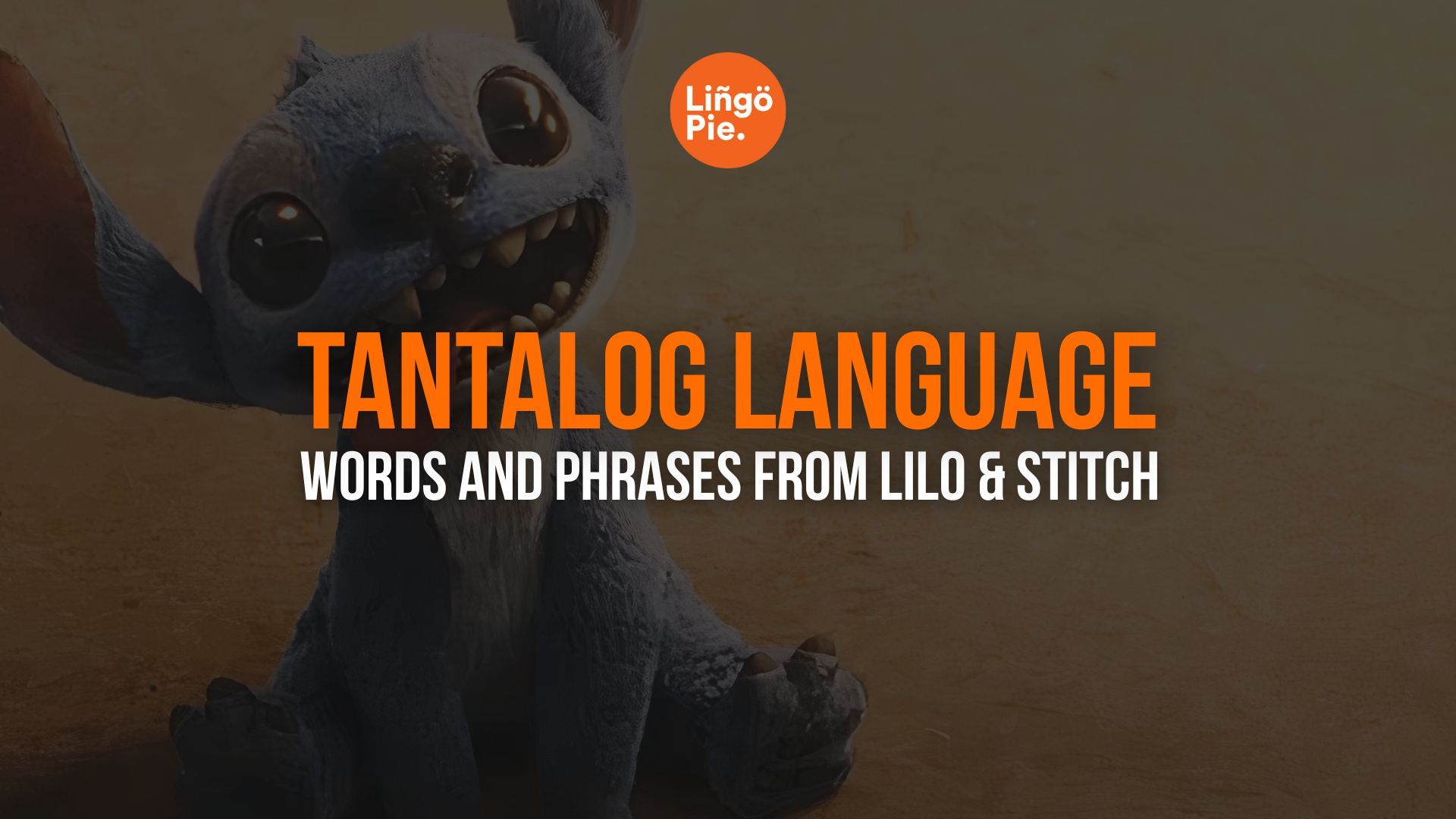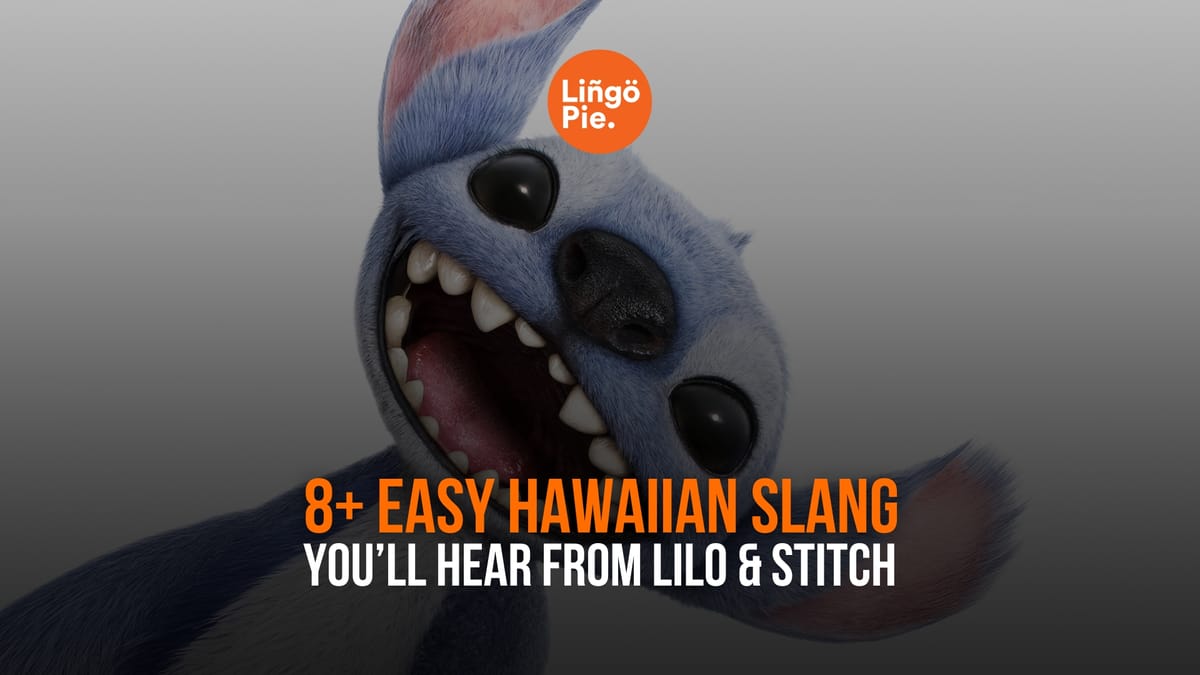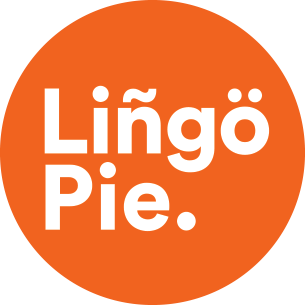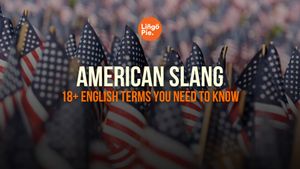Ever watched Lilo & Stitch and wondered what those unique Hawaiian phrases meant? With the live-action remake hitting theaters on May 23, 2025, it's the perfect time to brush up on your Hawaiian slang! Whether you're planning a trip to the islands or just want to understand what Lilo and Nani are saying, this guide will have you talking like a local in no time.
- Best Way To Learn Korean: A Guide For Beginners
- What’s The Best Way To Learn Spanish? [5 Best Tips]
- What's The Best Way To Learn Japanese? [Guide]

Hawaiian Language vs. Hawaiian Pidgin
Before diving into specific phrases, it's important to understand that there are actually two distinct linguistic elements at play in Hawaii: 'Ōlelo Hawai'i and Hawaiian Pidgin.
'Ōlelo Hawai'i is the native Hawaiian language spoken by indigenous Hawaiians. It's an official state language alongside English and is featured in many local place names, street signs, and cultural contexts.
Hawaiian Pidgin (or Hawaii Creole English) is a unique dialect that developed on sugar plantations in the 19th century when workers from different countries needed to communicate. It blends English with Hawaiian, Japanese, Chinese, Portuguese, Filipino, and other languages into a distinct way of speaking that most locals use daily.
In Lilo & Stitch, you'll hear a blend of both traditional Hawaiian words and Pidgin phrases that perfectly capture the authentic island culture. Let's explore the most common ones you'll encounter!

Hawaiian Slang You'll Definitely Hear in Lilo & Stitch
'Ohana
Pronunciation: oh-HAH-nah
You can't talk about Lilo & Stitch without mentioning "'ohana," perhaps the most famous Hawaiian word from the movie. As Stitch learns, "'Ohana means family, and family means nobody gets left behind or forgotten." The word has deeper cultural significance in Hawaiian culture, with its root 'ohā referring to the shoot of the taro plant (a staple food), symbolizing how family members are connected. The "ana" part conveys regeneration, highlighting the importance of future generations.
Keiki
Pronunciation: KAY-kee
This Hawaiian word simply means "child" or "children" and is used throughout Hawaii when referring to kids. In the movie, you might hear Lilo referred to as a keiki. It's a common term used in schools, stores, and everyday conversation throughout the islands.

Kāne and Wahine
Pronunciation: KAH-neh and wah-HEE-neh
These Hawaiian words designate male and female, respectively. You'll see these words most commonly on bathroom doors throughout Hawaii, and you might hear them used in Lilo & Stitch when characters are referring to men or women.
Da Kine
Pronunciation: dah kyne
This multipurpose Pidgin phrase can mean almost anything—it's the Hawaiian equivalent of "whatchamacallit" or "that thing." When someone says "da kine," the meaning depends entirely on context. It's essentially a fill-in-the-blank word that locals use when they can't think of the specific term they want.

Howzit
Pronunciation: how-zit
A contraction of "how is it," this friendly Pidgin greeting is the Hawaiian way of saying "What's up?" or "How are you?" It's a casual, warm way to greet someone that you'll likely hear characters use in the movie.
'Ono
Pronunciation: OH-no
When something tastes delicious in Hawaii, it's "'ono." This Hawaiian word describes anything incredibly tasty. You might hear characters talking about "'ono grinds" (delicious food) or saying something "broke da mouth" (was extremely tasty).

Shoots
Pronunciation: just like it looks!
When someone says "shoots" in Hawaii, they're basically saying "sounds good" or "okay." It's a way of agreeing to something or confirming plans. Often accompanied by a shaka sign (the "hang loose" hand gesture), it's a quintessential Hawaiian expression of positive agreement.
Talk Story
This Pidgin phrase means to chat, gossip, or catch up with friends. It emphasizes the importance of connection and community in Hawaiian culture. When characters in the movie are sitting around and chatting, they're "talking story."

Makai and Mauka
Pronunciation: mah-KAI and MOW-kah
These Hawaiian directional terms are essential for navigation on the islands. "Makai" means toward the ocean, while "mauka" means toward the mountains. Since Hawaii is made up of islands with mountains in the center, these terms are more useful than "north" or "south" for giving directions.
Pau
Pronunciation: pow (rhymes with "now")
This Hawaiian word means "finished" or "done." You might hear "pau hana" (done with work) or simply "pau" to indicate something is complete. It's a handy, short way to say you're finished with something.
Slippahs
Pronunciation: slip-pahs
These aren't just any flip-flops—they're a way of life in Hawaii! "Slippahs" (the Pidgin pronunciation of "slippers") are the go-to footwear for almost any occasion in the islands. You'll definitely see these throughout the movie.
Hawaiian Culture In The New Lilo & Stitch Movie
The upcoming live-action remake of Lilo & Stitch, set to release on May 23, 2025, stays true to its Hawaiian roots with filming taking place in Hawaii. The film stars Native Hawaiian actress Maia Kealoha as Lilo, bringing authentic representation to this beloved character.
What makes the original Lilo & Stitch so special is how it genuinely portrays Hawaiian culture rather than just using the islands as an exotic backdrop. The movie shows real Hawaiian practices like hula, surfing, and the importance of 'ohana (family), while naturally incorporating Hawaiian language and Pidgin into the dialogue.
The 2025 remake aims to maintain this cultural authenticity while bringing the story to life with a blend of live-action and CGI animation. Director Dean Fleischer Camp has worked closely with Hawaiian consultants to ensure respectful representation of island culture, including the proper use of language and slang.
Ready To Say Ohana In Another Language?
Has learning these Hawaiian expressions sparked your interest in exploring different languages and cultures? If yes, then you've got to try Lingopie!
Lingopie offers an engaging way to learn popular languages through movies and TV shows. This immersive approach makes language learning feel less like studying and more like entertainment, allowing you to absorb vocabulary, pronunciation, and cultural context naturally through media you actually enjoy watching.
Curious? Give Lingopie a try FREE for 7 days! Let the spirit of Hawaiian culture from Lilo & Stitch inspire your journey into language learning with Lingopie!
Frequently Asked Questions
1. Is Hawaiian Pidgin the same as the Hawaiian language?
No, they're different. Hawaiian language ('Ōlelo Hawai'i) is the ancient native language with its own alphabet. Hawaiian Pidgin evolved much later when plantation workers from different countries needed to communicate. Pidgin blends English with words from Hawaiian, Japanese, Portuguese, and other languages, creating the unique local dialect you'll hear in everyday conversations.
2. Can I learn to speak Hawaiian Pidgin as a visitor?
It's best to learn a few key phrases rather than trying to speak full Pidgin, which might come across as imitation. Locals appreciate visitors who understand common words like "howzit" (hello) or "mahalo" (thank you) but don't expect tourists to speak like locals. Respectful appreciation works better than imitation!
3. How does Lilo & Stitch showcase authentic Hawaiian culture?
The movie goes beyond using Hawaii as just a pretty backdrop. It shows real local life, highlights the importance of 'ohana (family), features authentic cultural practices like hula, and includes everyday Hawaiian phrases. The 2025 remake continues this tradition by casting Native Hawaiian actress Maia Kealoha as Lilo and filming on location in Hawaii.
4. How do I pronounce Hawaiian words correctly?
Hawaiian pronunciation is consistent: 'a' sounds like "ah," 'e' like "eh," 'i' like "ee," 'o' like "oh," and 'u' like "oo." Pronounce all vowels separately, even when they appear together. The 'okina (') is a brief pause (like in "uh-oh"), and a line over a vowel means to stretch the sound. Take it slow and you'll get it!
5. Why do people in Hawaii call others "Aunty" and "Uncle"?
This common practice shows respect for elders in the community. In Hawaiian culture, the concept of family extends beyond blood relatives. Calling someone "Aunty" or "Uncle" acknowledges their experience and position in the community, even if you're not related. It reflects the Hawaiian value of treating everyone with the respect you'd give to family.










![Improve Your English Listening Comprehension [2026 Guide]](/blog/content/images/size/w300/2023/12/5D8A320F-7EF3-4F0F-9EDD-0F91C9504FA0.png)